Phoebe Birds of America
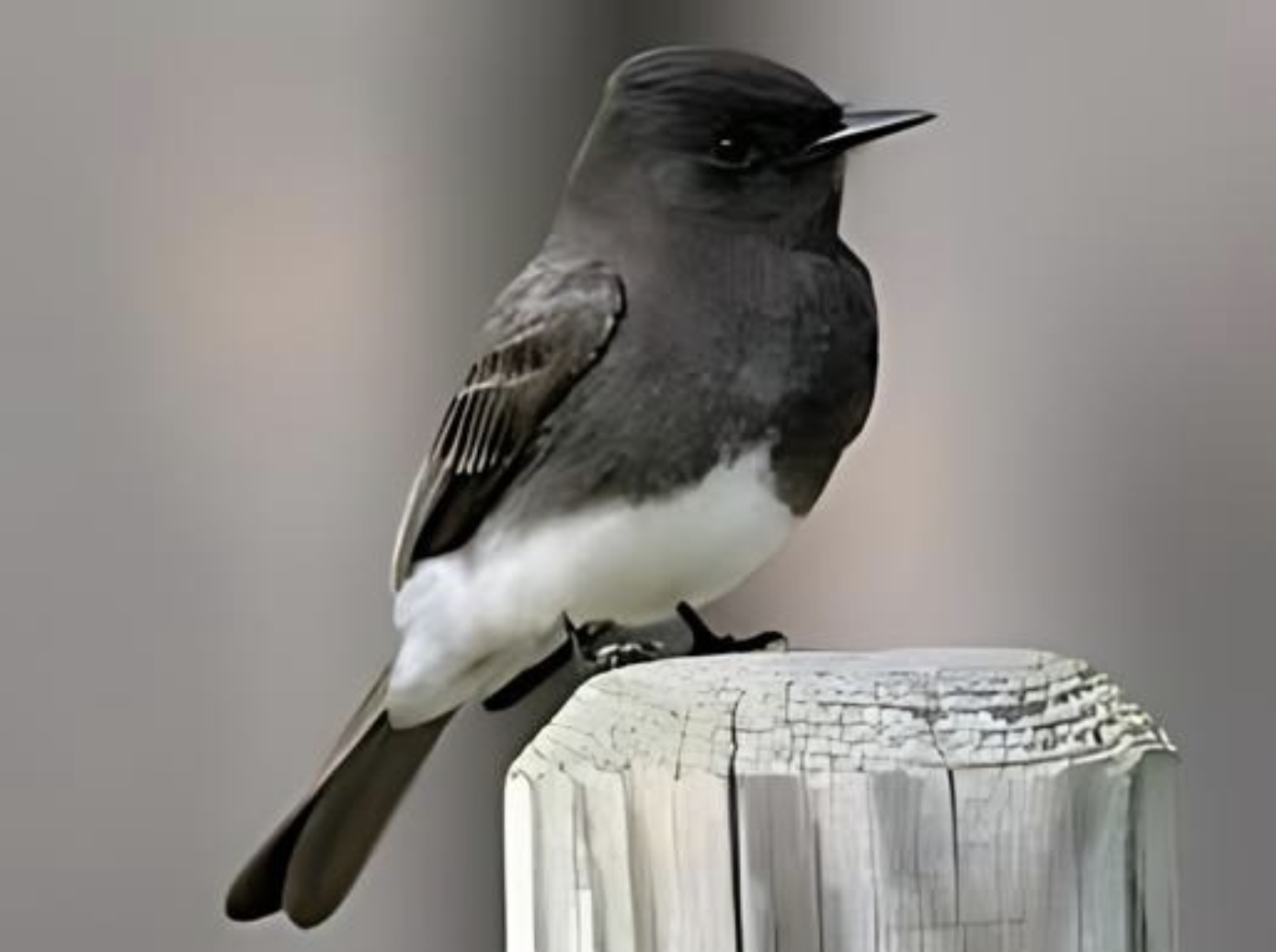
Black Phoebe
Photo Credit – Cornell Lab of Ornithology
Phoebes are smallish (6 inches/16 cm), insect-eating, perching songbirds native to the Americas.
- Black Phoebe – United States, Mexico, Central America, parts of South America
- Eastern Phoebe – Eastern North America
- Say’s Phoebe – Western United States and Canada
Phoebes belong to the flycatcher family, which includes several hundred species, including distinct Old World and New World varieties. The etymological origin of Phoebe is likely the Eastern Phoebe’s chirpy song “Whee-bee.” However, due to its spelling, some suggest it is named after the Greek goddess Phoebe or the Roman goddess Diana, alternatively known as Phoebe. The origin of Say’s Phoebe is more obvious. Napoleon’s nephew, an ornithologist who moved to New Jersey as the Napoleonic Empire collapsed, named the bird after the American naturalist Thomas Say 20 years after Mr. Say’s death from typhoid.

Phoebe’s Greek Family
Photo Credit Haicko Deck
I often see Black Phoebes as I walk my dog along a northern California creek. I see them perched in the open on low railings, rocks or the tops of bushes, pumping their tails and fluttering towards the ground to catch insects in flight (bees, wasps, flies, beetles, mosquitoes, crickets, moths, termites and ticks). Occasionally, they take insects from the ground, and they may also catch small fish. Their habitat is usually close to water since they use mud to build their nests, and water attracts insects. Adult plumage for both sexes is sooty black upperparts and breasts and a white belly and undertail. Their bill, legs and feet are black, and the head is often darker than the rest of their upper parts. You may also hear their thin, shrill whistle.
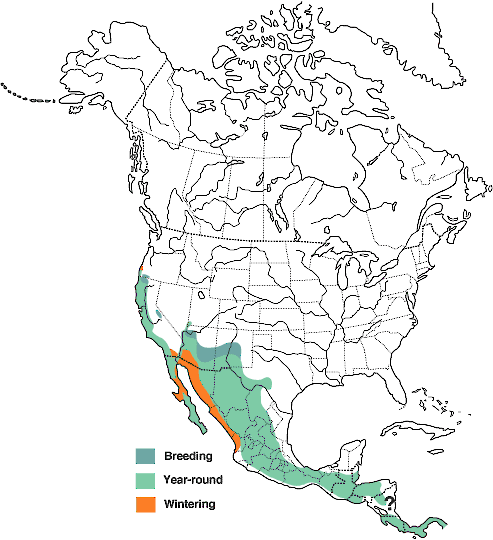
Black Phoebe Range Map
Photo Credit – Cornell Lab of Ornithology
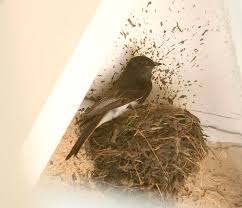
Black Phoebe Nesting
Photo Credit – Shasta Birding Society
Black Phoebes in California are present year-round, and the species has expanded into Oregon. Birds that breed in the north tend to migrate short distances, whereas most Black Phoebes are residents. The estimated breeding population is five million, and there has been a steady increase since the 1960s. The bird has benefited from human development, creating new nesting sites under roof eaves, irrigation ditches and culverts, near artificial ponds, and abandoned wells.
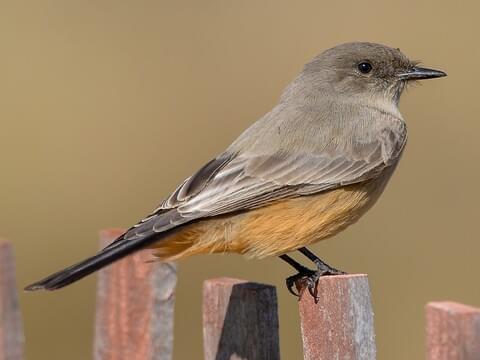
Say’s Phoebe
Photo Credit- Cornell Lab of Ornithology
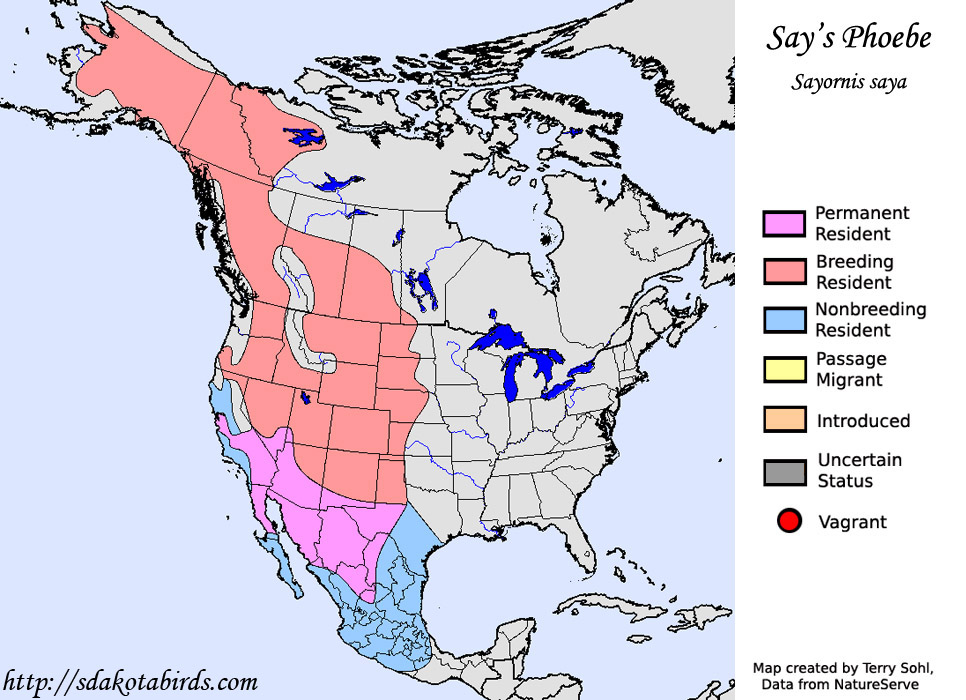
Say’s Phoebe Range Map
Photo Credit – South Dakota Birds and Birding
The other species in southwest and southern California is the Say’s Phoebe. It has cinnamon-brown underparts, grey-brown feathers above, and a black tail. It is common across western North America and breeds in Alaska, Canada, and the northern United States. Its preference is for dry and desolate areas. Northern birds migrate south to the southwestern States and Mexico for winter; otherwise, the species is resident. Its population is around four million, and it is stable to expand. Like other phoebes, birds appear unafraid of people.
The third and most numerous North American species is the Eastern Phoebe, found east of the Rockies. An estimated 16 million to 32 million occupy territory from Canada to eastern Mexico. It is a somewhat drab bird identified by its grey-brown upperparts, white throat, and dirty grey breast. It punches its tail while perching. Their preferred habitat is woodland, farmland, and urban areas, and birds migrate to the southern United States and Mexico for winter. Although monogamous with the same mate for several years, each bird enjoys its independence. Pairs spend very little time is together, and the female typically chases away the male during roosting.
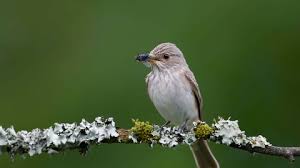
Spotted Flycatcher
Photo Credit – The Wildlife Fund
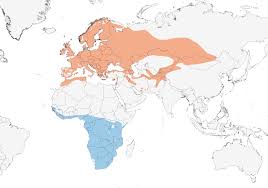
Orange: breeding; blue: non-breeding
Spotted Flycatcher Range Map
Photo Credit – Cornell Lab of Ornithology
Spotting phoebes in Britain during my early birdwatching in the 1960s was impossible. Only the Eastern Phoebe is recorded in the UK as a mega-rare vagrant. Therefore, my favorite flycatcher family representative was the Spotted Flycatcher, a bird common around my home near York, England. It was a summer visitor, arriving late and had disappeared by late September. Its plumage is a streaky grey-brown bird recognized most easily by its behavior as it sits on a high perch, flicks its tail, and pounces on insects in midair. It is a long-distance migrant, spending its winters in southern Africa.
Regrettably, the UK population of Spotted Flycatchers has crashed to approximately 40,000 breeding pairs since the mid-1960s, an estimated reduction of around 90 per cent. In Europe, the overall decrease is about 60 per cent. The reasons are unclear. Suggestions include reduced fledgling survival rates, predators, reduction in flying insects and loss of grassland. There is also a need to investigate what happens to them in their wintering grounds. Here is an example of how environmental changes can affect wildlife differently. Changes in North America have allowed North American flycatcher species to flourish, whereas the opposite seems to occur in Europe with the Spotted Flycatcher.
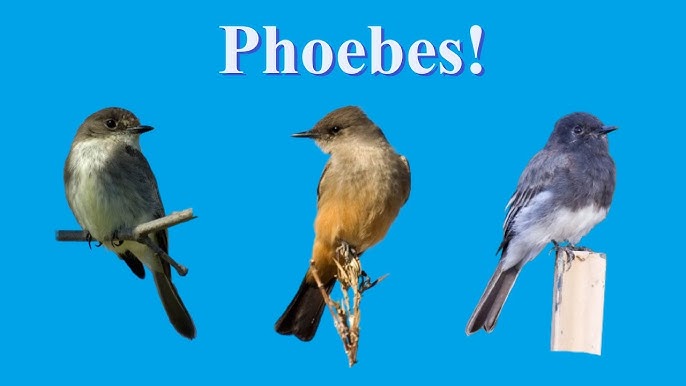
The Three Phoebes that catch insects flying in midair
Photo Credit: The Maine Monitor



